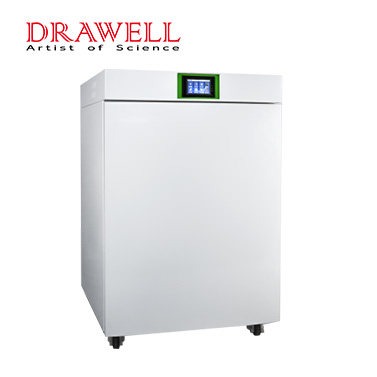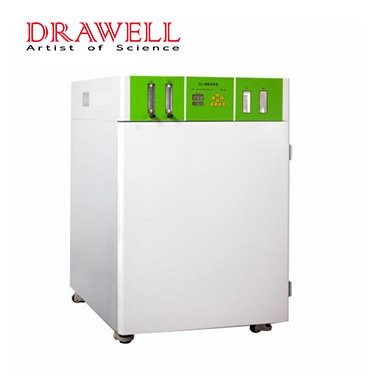CO2 incubators are essential instruments widely used in various fields such as medicine, immunology, genetics, microbiology, agricultural science, and pharmacology. They provide a controlled environment to simulate the growth conditions of cells and tissues in organisms. When selecting a CO2 incubator for cell culture, several factors need to be considered to ensure a stable cultivation environment. This article will discuss the key factors to consider when choosing a suitable CO2 incubator.
Temperature Control:
Temperature control is crucial for maintaining healthy cell growth. There are two types of heating structures to choose from: air jacket heating and water jacket heating.
Air Jacket Heating: Air jacket CO2 incubators directly heat the gas inside the incubator using a heater. They offer faster heating and temperature recovery, making them suitable for short-term cultivation and situations that require frequent opening and closing of the door.

Water Jacket Heating: Water jacket CO2 incubators maintain a constant temperature by surrounding the inner box with a separate hot water compartment. They provide better temperature accuracy and stability during power failures, making them ideal for long-term stable culture conditions.

CO2 Sensors:
CO2 concentration detection can be achieved using infrared sensors (IR) or thermal conductivity sensors (TC). Each system has its advantages. Thermal Conductivity Sensor (TC): TC sensors measure CO2 concentration by monitoring the change in resistance between two thermistors. However, they can be affected by fluctuations in chamber temperature and relative humidity, making them less accurate in situations that require frequent opening of the incubator door.
Infrared Sensor (IR): IR sensors offer more precise CO2 control as they are unaffected by changes in temperature and relative humidity. They are particularly suitable for cell cultures that require frequent door openings. However, IR systems are generally more expensive than TC systems.
Relative Humidity Control:
Controlling relative humidity is essential to prevent culture failure due to excessive drying. Larger CO2 incubators often use steam generators or sprayers, while smaller ones generate moisture through evaporation from humidity pans. Some incubators have additional features, such as a humidity reservoir on the control panel, to enhance evaporation and increase humidity levels.
Microprocessor Control System:
A microprocessor control system provides convenient and easy operation of the CO2 incubator. It maintains a steady state of temperature, humidity, and CO2 concentration. Look for features like LED displays, high-temperature automatic adjustment and alarm devices, CO2 alarms, password protection settings, and automatic calibration systems. These features ensure precise control and simplify operation.
Pollutant Control:
Contamination can compromise cell cultures. Manufacturers have implemented various measures to reduce and prevent contamination. Look for features that minimize areas where microorganisms can grow, such as enhanced CO2 incubators with ultraviolet cleaning functions or HEPA filters that can filter out particles and kill microbial particles.
In conclusion, when choosing a CO2 incubator for cell culture, consider temperature control options (air jacket or water jacket heating), CO2 sensor types (TC or IR), relative humidity control methods, microprocessor control systems, and pollutant control features. By evaluating these factors based on your specific needs, you can select an ideal CO2 incubator that provides a stable and optimal environment for your cell culture experiments.